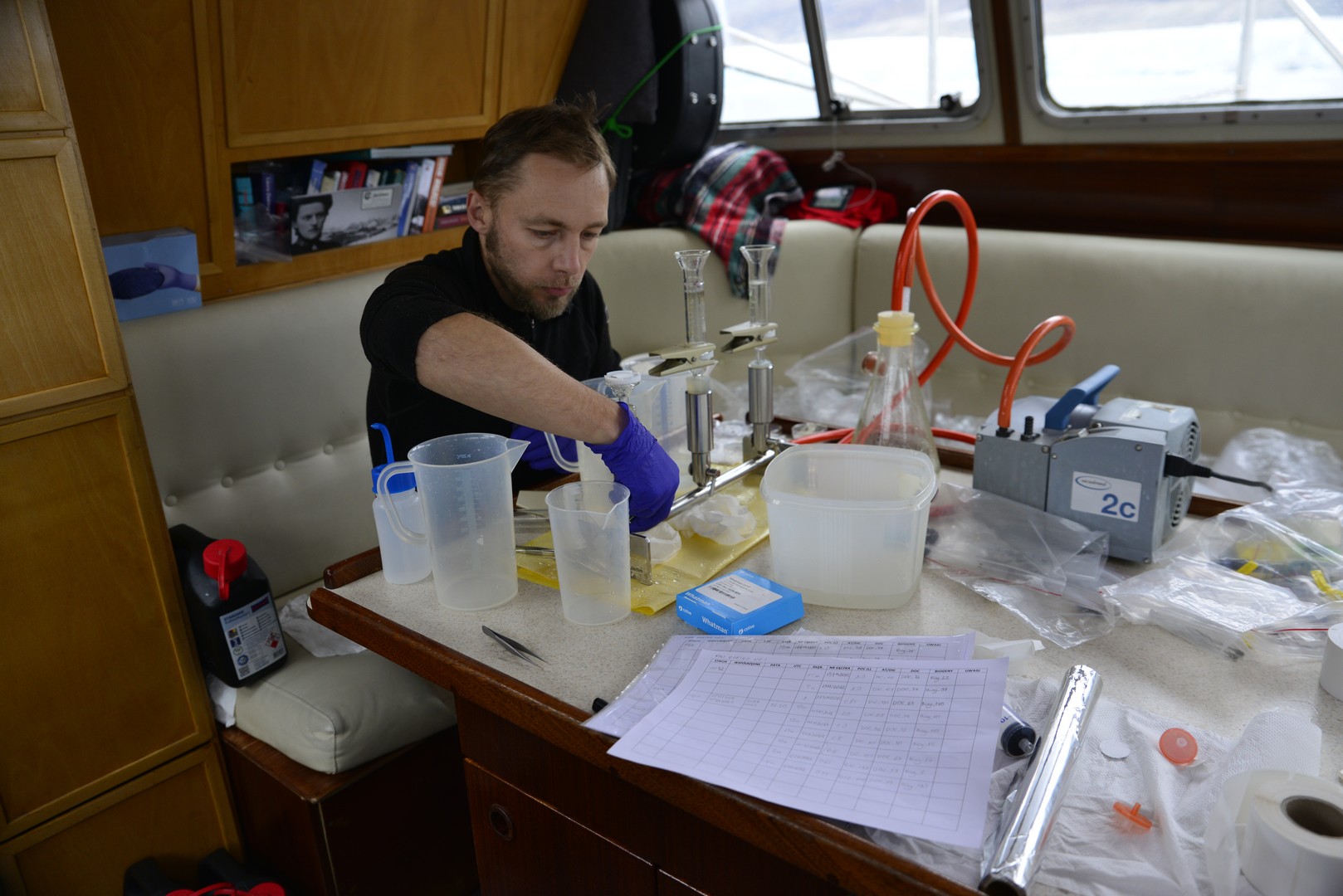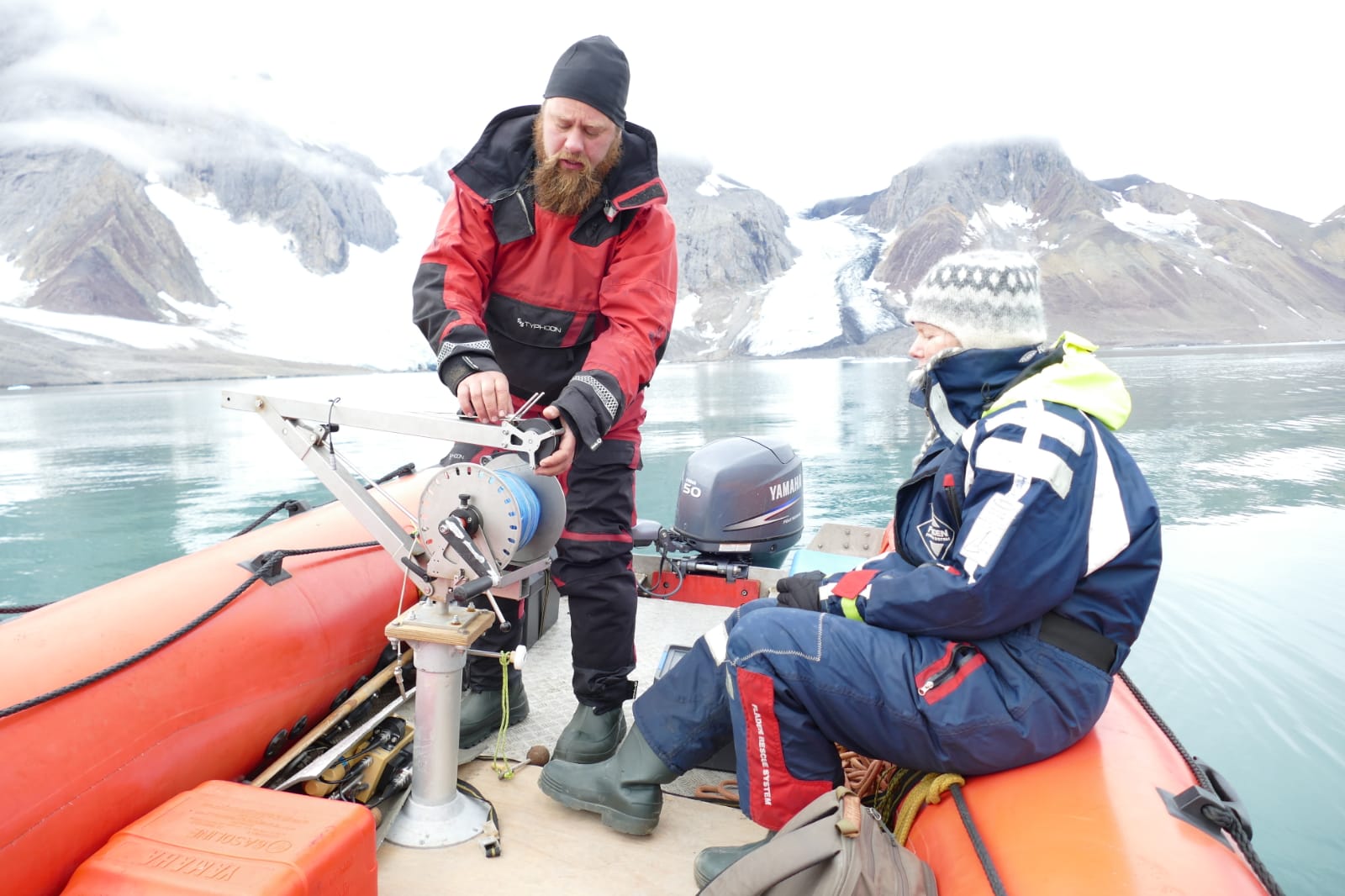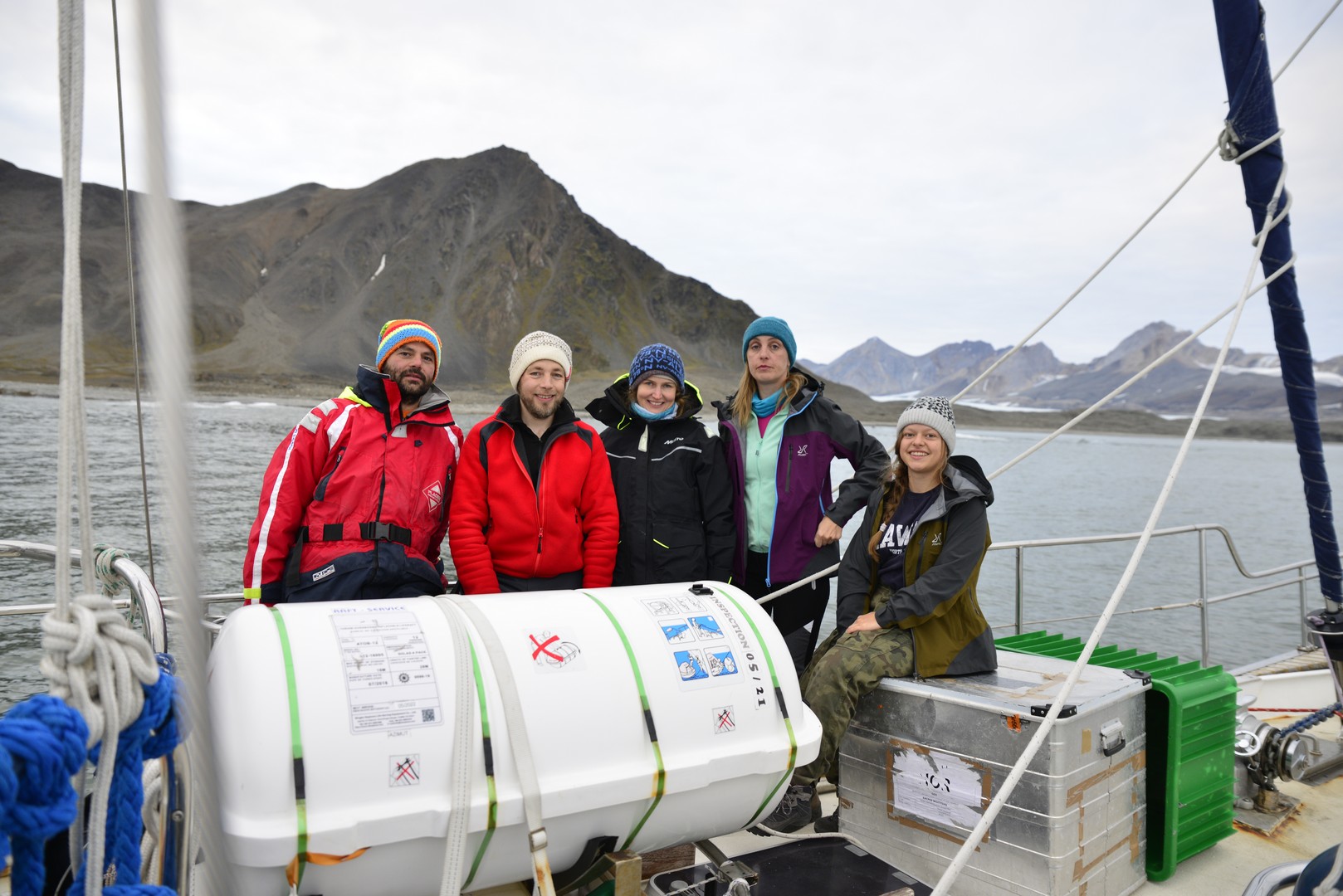Scientists from the Institute of Geophysics of the Polish Academy of Sciences, the Institute of Oceanology of the Polish Academy of Sciences and the University of Wroclaw, as part of the project “RAW – Retreat And Wither” – What is the influence of glaciers recession from tidewater to land-based on the marine biological production and biogeochemistry in the Arctic?” carried out a series of measurements during this year’s summer research work in the Arctic.
– The project’s activities from mid-June to the end of September involved two cycles of work – a series of measurements from the research vessel Oceania carried out in Isfjorden and the yacht Azimuth carried out near Bellsund and Hornsund. The goal was to verify the selection of survey areas and identify two-three representative regions where next year’s measurement campaigns will be carried out, says Prof. Mateusz Moskalik, RAW project manager.
Oceanographic measurements were made, e.g. temperature, salinity in the fjord, pH, the amount of oxygen and carbon dioxide dissolved in the water, chlorophyll content, and processes related to sedimentation were analyzed, i.e. the concentration of suspended solids and types of particles in the water tone in vertical depth profiles. On the other hand, in terms of ecological measurements, plankton nets were used to collect plankton samples from the area, and a camera was used to take underwater photos, so that the morphological characteristics of the suspended matter were further analyzed. Dr. Emilia Trudnowska from the Institute of Oceanology of the Polish Academy of Sciences is responsible for this part of the research.

– In the RAW project, I am fortunate to deal with its “cherries,” i.e. zooplankton – direct consumers of the primary production studied, and marine aggregates (so-called ‘marine snow’), which are formed by the combination of unconsumed organic matter along with other elements suspended in the water depths. During this year’s cruise on the yacht Azimuth, I collected phytoplankton samples with nets and bathymeters, filtered water to estimate chlorophyll content at different depth levels, collected zooplankton samples with nets, and took underwater photos of organisms and co-occurring aggregates with a modern underwater camera, Dr. Trudnowska says of her work.
During both research cruises, samples of water and suspended material were taken from the water column, which will be analyzed in detail for nutrient content. These analyses will be used to determine the type and amount of organic and inorganic nutrients that play a key role in the growth of phytoplankton responsible for primary production and associated uptake of atmospheric CO2.
– Glaciers that drain into the sea and those that terminate on land can intensify the supply of nutrients, which in turn promote the growth of phytoplankton. In addition to the commonly analyzed macronutrients, which mainly include phosphate, nitrate and silica, there are also micronutrients (including Fe, Mn, Zn, Mo) that limit primary production. This means that their absence can slow down phytoplankton growth despite the high content of other macronutrients. During field work in August this year, I took samples to determine the content of micronutrients dissolved in seawater and those adsorbed on the surface of the suspension. Detailed analyses using electron and transmission microscopy techniques, high-resolution inductively coupled plasma mass spectrometry (QQQ-ICP-MS), and selective extraction will be performed during my study visits to the University of Pennsylvania in the US and the GFZ Hemlholtz Centre in Germany, says Dr. Lukasz Stachnik from the University of Wroclaw.

In addition to the work carried out on the ship and yacht, part of the tasks were carried out by a two-person team at the Polish Polar Station Hornsund in Spitsbergen – Meri Korhonnen, M.Sc, and Dr. Jerzy Giżejewski, who were responsible for collecting samples, analyzing and studying sedimentation processes and hydrographic conditions in the area of Hansbukta and Gåshamna bays.
– I can speak in superlatives about the working conditions, we worked very well with the crew of the station in Hornsund and the rest of the team and the crews of the yacht on which we worked during the cruises to Brepolen. Only the weather conditions were “not very Spitsbergian” – almost no wind, and therefore no waves, warm, about 5 degrees,” recalls Dr. Giżejewski.

This season, the weather played tricks on scientists – in the typical summer months, when one would expect better weather conditions, there were frequent winds, waving and drifting ice from the glacier, which hampered work on the water. On the other hand, in September, when strong winds and waves would be expected, the weather was just the opposite.
In September, the research team set up two unmanned measuring stations at the bottom of the Hornsund fjord, which continuously record physical and chemical conditions, including temperature and salinity. A sensor for suspended solids concentration and PAR (Photosynthetically Active Radiation), the range of wavelengths of solar radiation needed for photosynthesis, has also been placed. Meanwhile, multisediment traps have been set up in Hansbukta to catch nutrient-rich suspended solids for analysis of sedimentation processes.
– I think we managed to carry out all the planned work and we are very satisfied with it. We took measurements at practically all sites except one, because the weather did not allow us to swim towards Sørkap. All the samples were collected – at IO PAS they complained at first that there were too many, says Prof. Dr. Matthew Moskalik.
The scientists’ plans for the RAW project for the next season include two research cruises to Svalbard in May and late July/early August to conduct two measurement series at three selected locations. Next year, the Polish team will be joined by researchers from the West Norway University of Applied Sciences (HVL), a foreign partner unit in the RAW project.

Dr. Emilia Trudnowska tells us that there is more to scientific work than taking measurements and analyzing data:
– Despite the wind, rain, waves and cold, working on the yacht was a wonderful experience. The small research vessel imposes proximity in a sense, so we returned from the cruise not only full of impressions, boxes stuffed with samples, disks heavier with measurement data and beautiful photos, but also… we returned as friends who experienced something special together.
The project “RAW – Retreat And Wither” – What is the influence of glaciers recession from tidewater to land-based on the marine biological production and biogeochemistry in the Arctic? received funds within the GRIEG competition funded by the Norwegian Financial Mechanism 2014-2021.
















